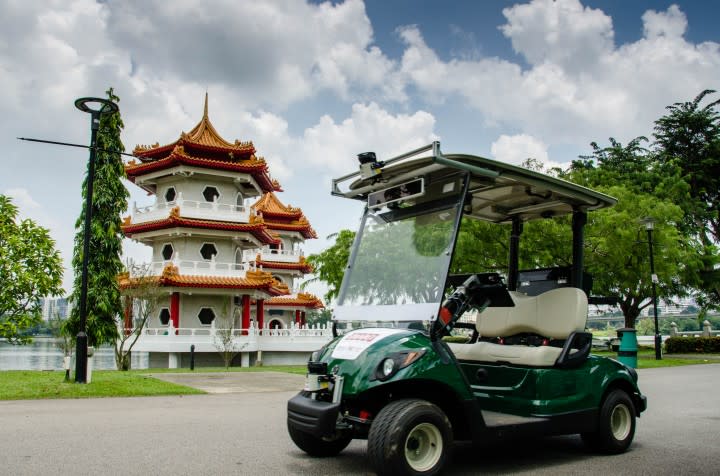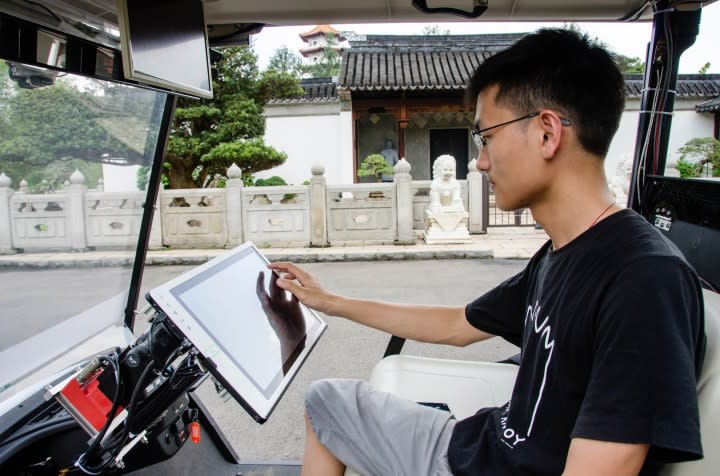Driverless cars in Singapore are coming faster than you think. They’re already being tested here

Singapore has driverless trains. But how about driverless cars? Making that happen is much more challenging due to the chaotic nature of road traffic. But today, the country has moved one step closer to having autonomous cars on the roads.
Stroll down the Chinese and Japanese Gardens, and you’d be able to see driverless buggies cruising down the paths at a leisurely 10km/h. These vehicles, which ferry passengers around free-of-charge, is part of a trial by researchers and engineers from the Singapore-MIT Alliance for Research and Technology (SMART) and the National University of Singapore (NUS).
The experiment will last from October 23 to November 1 from 8am to 2pm. It will resume again after an evaluation. Visitors to the gardens can book a ride through this website.
This is the first time two driverless vehicles have been unleashed for public use. Having two robot buggies in the vicinity also makes things interesting: vehicle-to-vehicle communication. Indeed, the two buggies can talk to one another and figure out ways to move passengers more efficiently.

This deployment is just the latest phase in the country’s slow move towards having robotic cars on public roads. In 2011, a retrofitted buggy was driven around the NUS campus grounds for four years, drawing bemused looks from students.
Earlier this year, a Mitsubishi i-MiEV electric car was automated in a similar fashion for a media unveiling. I hopped on for a joyride and found the steering wheel moving as if controlled by a ghost. Human comfort wasn’t a priority though (ghosts and robots don’t need it), as the car jerked to a stop whenever someone blocked its path. No doubt the program would’ve been refined since then to make the experience more human-friendly.
See more: Singapore’s self-driving car makes Google’s version an unnecessary luxury
Driverless cars are probably coming faster than you’d expect. Google has been at it since 2005, and Nissan is promising an autonomous vehicle by 2020, though that one won’t be fully automatic. Even Chinese search giant Baidu revealed that it’s working on its own versions of a smart car.
But it’s perhaps Elon Musk and Tesla that are creating the most buzz of late. Musk declared on CNN that by 2015, 90 percent of a ride on a Tesla car could be automated, and that includes highway travel.
“This is a Silicon Valley company, and if we’re not the leader, then shame on us,” he said.
This post Driverless cars in Singapore are coming faster than you think. They’re already being tested here appeared first on Tech in Asia.

 Yahoo Finance
Yahoo Finance 
